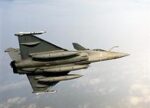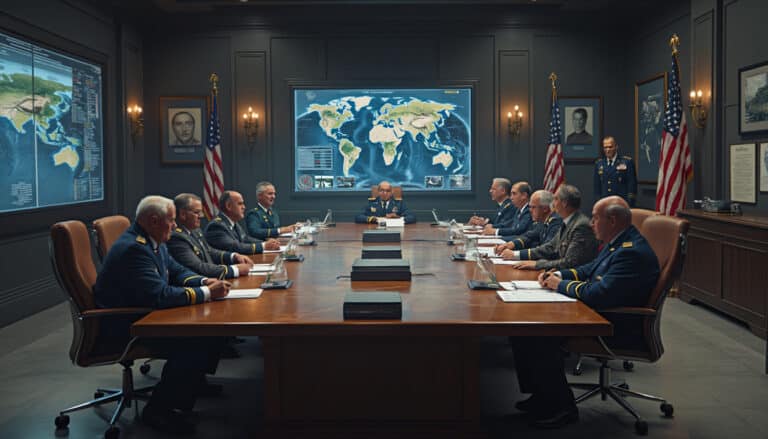The spotlight is once again on the F-35 program, a true gem of American military aviation. A new budget proposal promises to add eight additional aircraft to the already impressive fleet. While the Pentagon initially stated it wanted to acquire 68 units, this initiative could raise the total number to 76.
This decision stands in stark contrast to previous recommendations from the House, which considered reducing purchases of F-35 by at least ten units. The proposed adjustments specifically aim to strengthen the capabilities of the Air Force and Navy by adding two F-35A and six F-35C. Meanwhile, the number of F-35B allocated for the Marine Corps remains unchanged. This turnaround comes amid growing frustration among lawmakers regarding delays and technical issues faced by the program. At the same time, funds allocated to other sophisticated aircraft reflect a continued commitment to modernizing American armed forces. The budgetary balance between innovation and financial discipline remains a crucial issue for the future of these strategic projects.
Table des matières
ToggleWhat is included in the spending bill regarding the F-35s?
The spending bill recently proposed by the House Appropriations Committee aims to increase the acquisition of F-35 Joint Strike Fighter aircraft. Initially, the Pentagon budget for fiscal year 2025 envisioned the purchase of 68 F-35s, distributed between 42 F-35A models for the Air Force and 13 F-35B and F-35C models for the Navy and the Marine Corps. However, the bill proposes a significant increase in these numbers.
Indeed, the bill supports the procurement of 76 F-35s, an increase of 8 aircraft compared to the initial plan. This includes two additional F-35A for the Air Force and six additional F-35C for the Navy. This decision reflects a desire to enhance air defense capabilities while addressing the operational needs of the various branches of the armed forces.
This increase sharply contrasts with the previous House proposal on the National Defense Authorization Act (NDAA), which envisioned a reduction in F-35 purchases by at least 10 units. This divergence highlights the differing priorities and perspectives within legislatures regarding military equipment investments.
To learn more about the distinction of fighter aircraft, read this article: What distinguishes a fighter plane from other planes?
Why does the bill differ from the National Defense Authorization Act?
The disagreement between the spending bill and the National Defense Authorization Act (NDAA) primarily lies in their respective approaches to the F-35 program. While the spending bill proposes an increase in purchases, the NDAA envisions a significant reduction, potentially by up to 20 F-35s.
This divergence is fueled by concerns regarding the performance and costs of the F-35 program. In particular, the NDAA draft imposes a suspension on the delivery of 10 additional aircraft until several technical issues are resolved. These issues include delays in technological updates such as the Technology Refresh 3, which has delayed the delivery of the latest fighter jets.
Members of the House Armed Services Committee (HASC) express growing impatience with the F-35 program and manufacturer Lockheed Martin, pointing to delays and budget overruns. They believe that a reduction in purchases will allow for repurposed funds to address dysfunctions before proceeding with the program.
To delve deeper into the challenges faced by the F-35 program, read this article: Eight F-35 jets awaiting delivery due to a halt related to a Chinese alloy
What are the stakes of the F-35 program?
The F-35 Joint Strike Fighter program is at the center of current budget debates due to its strategic importance and technical challenges. As a fifth-generation fighter jet, the F-35 is designed to offer advanced air superiority through its stealth capabilities, sophisticated avionics, and versatility. However, the program has encountered several obstacles that have sparked controversy.
One of the main issues lies in the development and production costs. Lockheed Martin’s production contract, while non-definitive and valued at $11.8 billion, reflects the massive investments necessary to maintain and improve the program. Moreover, technical challenges such as delays in technological updates and issues with materials, such as the use of a Chinese alloy, have impacted delivery timelines and overall costs.
Another critical issue pertains to the source and quality of components. For instance, the suspension of deliveries of certain F-35s due to a problem related to a Chinese alloy has highlighted vulnerabilities in the supply chain and necessitated costly technical adjustments.
To understand what distinguishes a fighter jet like the F-35 from other types of aircraft, visit this link: What sets a fighter plane apart from other planes?
What other military equipment is funded by the bill?
In addition to the F-35s, the spending bill includes funding for a variety of other essential military equipment. These include:
- KC-46 Pegasus: 15 air-refueling aircraft are planned to enhance the Air Force’s in-flight refueling capabilities.
- MH-139 Grey Wolf: Eight additional helicopters for search and rescue missions.
- F-15EX Eagle II: 18 upgraded fighters to replace older models and maintain air superiority.
Additionally, the bill allocates $120 million for the purchase of two HH-60W Jolly Green II combat rescue helicopters, although the total desired number is reduced to 75 units to ensure their effectiveness against advanced adversaries.
Another important aspect concerns the B-21 Raider, with an allocation of $1.9 billion for the acquisition of this next-generation stealth bomber, as well as $2.7 billion for research, development, testing, and evaluation (RDT&E) to continue its development.
These investments demonstrate a continuous modernization strategy for the armed forces aimed at maintaining technological and operational superiority. For more information on F-35 production contracts, refer to The Pentagon awards Lockheed a non-definitive F-35 production contract worth $11.8 billion.
What are the reactions of experts and stakeholders?
The proposal to increase F-35 purchases has sparked varied reactions among military experts, policymakers, and citizens. On one hand, some analysts believe that expanding the F-35 fleet is essential to address growing threats and maintain air superiority against potential adversaries.
On the other hand, critics raise concerns about the high costs and ongoing technical challenges of the F-35 program. Delays in technological updates, supply chain issues, and maintenance costs have fueled distrust regarding the program’s long-term viability.
Representatives of the Marine Corps nonetheless support the importance of F-35C for naval operations, arguing that their versatility and stealth capabilities are crucial for modern missions. Similarly, some members of Congress view the increase in purchases as an opportunity to strengthen the national defense industry and create jobs in the aerospace sector.
Defense experts’ opinions, such as Stephen Losey from Defense News, illuminate the tensions between budgetary imperatives and strategic needs. According to Losey, “the ability to invest in advanced technologies like the F-35 is essential, but it must be balanced with rigorous cost management and prompt resolution of technical problems.”
For a detailed analysis of F-35 contracts and challenges, read this article: The Pentagon awards Lockheed a non-definitive F-35 production contract worth $11.8 billion.
























